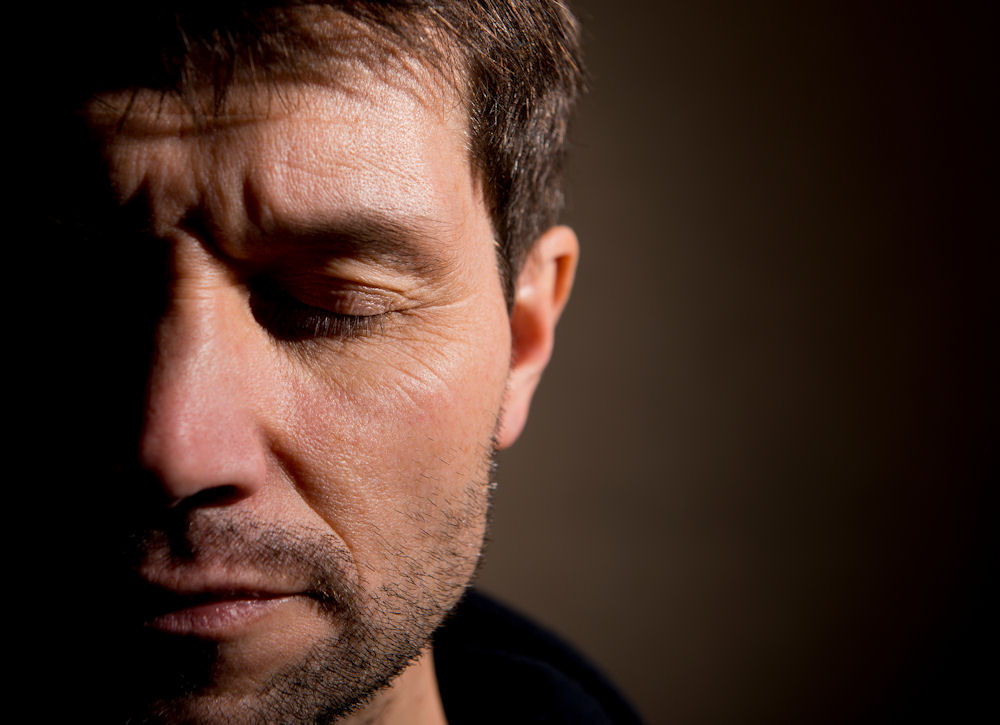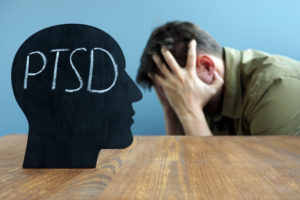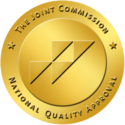Given the health and social crises that we have been going through in recent months, it would not be surprising if many of us would be at risk of developing post-traumatic stress disorder (PTSD).
Throughout our lives, we will accumulate experiences of all kinds; some will be great and positive, and others, on the other hand, will be unpleasant and may even become traumatic.
Trauma is being in a situation that is very stressful, frightening, or distressing and can lead to serious mental and emotional damage. Numerous events can cause trauma in a person. The most common are physical or psychological abuse, sexual violence, crimes, war, natural disasters, or severe accidents.
Although it is said that not all trauma directly results in post-traumatic stress disorder (PTSD), it is nonetheless helpful to be aware of the common PTSD triggers, signs and symptoms, levels of care available, and that help is available.
At Eagle Creek Ranch Recovery in Nampa, Idaho, we help people manage their co-occurring disorders by identifying their common PTSD triggers and addiction through dual diagnosis treatment.
What is PSTD?
Head shape with PTSD Post traumatic stress disorder.Post-traumatic stress disorder, also known as PTSD, is a mental health condition that occurs after an individual experiences terrifying circumstances or witnesses a traumatic event. The severity varies widely from person to person. While the symptoms may be different, they often overlap and interact. In some cases, the effect is temporary and decreases over time until it disappears. However, in the majority of cases, the opposite happens; it gets worse with time and continues for weeks, months, or even years.
A diagnosis of PTSD requires specific criteria to be met, including intrusive thoughts, avoidant behavior, changes in mood, impulsivity, and reactivity.
To meet the criteria for PTSD, a person must have a specific set of these symptoms for at least one month and have difficulty functioning in their daily life. People who exhibit some of these symptoms within a month of the traumatic event may be diagnosed with Acute Stress Disorder or another trauma-related condition. If their symptoms do not improve, they may be diagnosed with PTSD later on.
The 5 Stages of PTSD
Following a traumatic event, PTSD usually develops in 5 stages. While not everyone who witnesses a traumatic event (even the same traumatic event) develops this condition, those who do are more likely to follow the same path as illustrated below.
Stage 1: Impact or Emergency
This is the stage immediately following the traumatic event in which the individual is struggling to cope with what they have witnessed or been a part of.
Stage 2: Denial/Numbness
Not everyone who suffers from PTSD goes through the denial or numbing stages. People suffering from PTSD will do their best to protect or numb themselves at this stage by denying that the event occurred.
Avoiding difficult emotions through denial is the mind’s way of protecting itself from further harm by removing the high stress and anxiety it is experiencing.
People suffering from PTSD symptoms must deal with this stage in order for their minds to progress. This stage can be addressed with compassionate, professional treatment.
Stage 3: The Rescue Stage (Intrusive or Repetitive)
During the rescue phase, the affected person begins to accept what has happened to them. This stage may include returning to the scene of the trauma, such as returning home after a bushfire or natural disaster. It entails acknowledging what has occurred while also dealing with the initial shock and distress.
PTSD patients may continue to have nightmares and flashbacks, as well as become increasingly anxious and jumpy, despite believing they have dealt with the trauma. Denial, confusion, despair, and hopelessness are all difficult emotions that can be experienced during this time. This is often the most destructive stage, but it is also the point at which the person suffering from PTSD may finally be willing to confront the trauma that is controlling his or her life and affecting the lives of others.
Stage 4: Short-term or Intermediate Recovery
Individuals with PTSD begin to recover and adjust to returning to a ‘normal’ life after meeting their basic safety and survival needs. At this point, people may be humbled by the outpouring of love and support for them, or they may be disappointed by others’ lack of care and concern for them.
Transitioning to a new level of acceptance and understanding of the trauma and how it affects their lives is part of this short-term recovery. Healing can begin, and many people begin to enjoy a more positive outlook, including a plan or steps toward long-term PTSD recovery.
The effects felt during the Rescue stage are often felt during this period, and some people may experience physical symptoms such as fatigue and/or sleep disturbances, and stress reactions such as irritability.
Stage 5: Long-term Reconstruction or Recovery
When a person suffering from PTSD begins to work through and implement a recovery program, he or she has entered the fifth stage of reconstruction. This is also referred to as the Integration Stage.
Coping mechanisms are developed and learned to address symptoms, and these new skills are integrated into daily life, allowing people to look forward in their lives. However, some people may become concerned about their futures, manifesting as fear and depression.
The fifth stage journey may be long, and most people regress when they are in a current stressful situation, including triggering events. Implementation of coping strategies and skills learned through a recovery program is always necessary at this stage for the person to continue to deal with the situation.
Types and Symptoms of Post-traumatic Stress Disorder (PTSD)
One of the most significant factors one has to be aware of is the time at which the symptoms appear. Contrary to popular belief, it does not happen right away. Often, it takes weeks or even years to manifest. PTSD symptoms are generally classified into four types and symptoms:
It is one of the most typical symptoms of post-traumatic stress disorder. This occurs when a person uncontrollably and vividly recalls the terrible incident through flashbacks, upsetting dreams or nightmares, and recurrent and distressing emotions or sensations such as pain, sweating, feeling sick, or trembling.
The first reaction to a traumatic memory is to avoid thinking about it. This makes an individual avoid those people, things, or places that remind them of the painful experience.
In the worst case, some people try not to feel anything at all to cope with their emotions. We call this emotional numbing. An emotionally numb person typically isolates themselves and stops engaging in activities they once found enjoyable.
A mood swing is a sudden and often intense change in mood. It can range from mild to severe and last for a short time or several days. Common symptoms of a mood swing include feeling irritable, hopeless about the future, detached from family and friends, anxious, or sad, as well as experiencing changes in energy levels and sleep patterns.
An individual who suffers from PTSD could experience extreme anxiety and have trouble relaxing. They may be constantly alert for danger and easily startled. Hyperarousal is the term for this emotional state, which can cause angry outbursts, sleeping problems (insomnia), and difficulty concentrating.
Post-traumatic stress disorder has extremely clear indications and symptoms. Although there may be similar situations, not everyone may experience this disorder.
What Causes Post-Traumatic Stress Disorder (PTSD)?
You probably think of natural disasters, fires, or car accidents when you hear the word “trauma.” Yes, you are correct! Those are all possible traumatic situations that can trigger what we know as post-traumatic stress disorder. However, many other situations and factors may be involved with this condition.
The list below includes the most common PTSD triggers:
- Experiences of having episodes of stress and trauma in the past
- Hereditary mental problems such as anxiety
- Stressful environments, like being a firefighter, police officer, ER doctor, etc
- A family or social environment with little contact
- Assaults, whether physical or sexual
- Air or water accidents
- Threats, especially with a weapon
- Exposure to risky situations
- Medical diagnosis
What Happens If PTSD Triggers Episodes?

When a person is triggered, they are most likely to experience intense emotions such as fear, anxiety, or anger. They can also feel overwhelming physical sensations such as a rapid heartbeat, sweating, and pain.
Drug addiction is another well-known long-term side effect of PTSD. People are more likely to self-medicate when they experience PTSD triggers. They often turn to drugs or alcohol to cope with their sadness and anxiety. This can occur over time as tolerance increases and intake rises. PTSD and drug addiction often go hand-in-hand and need to be treated simultaneously as a dual diagnosis.
Addiction typically grows worse when the post-traumatic disorder is left untreated. Conversely, PTSD typically rises along with alcohol or drug abuse. Certain medications and alcohol can worsen PTSD symptoms and lead to physical impairment, overdose, or even death.
When drugs are misused or abused, an individual can have the following signs and symptoms:
- Confrontational when questioned about drug use
- Difficulties in finances and changes in spending habits
- Loss of weight and decrease in appetite
- Lack of motivation and ineffective performance at work
- Looking sick, such as having red eyes and changing skin tone
Patients suffering from a dual diagnosis, such as those with PTSD and drug addiction, require combined care. Remember that a successful recovery depends on a specialized treatment plan that properly understands each case’s particular needs.
How Long Do PTSD Triggers Last?
There is no easy way to predict how long PTSD could last, but there are numerous factors that can affect the duration of the condition. This includes the type of trauma, the length of the incident, the impact on the brain, the pace of treatment, concurrent mental health issues, and the reaction to therapy.
Although PTSD treatment can be managed with the right treatment, this condition cannot be cured. The traumatic event can never be completely eradicated, so the psychological effects are likely to last a lifetime and can occasionally recur. Participating in evidence-based therapy, however, can significantly improve a person’s quality of life and help them rediscover joy and happiness in the future.
Treatments for Post-Traumatic Stress Disorder (PTSD)

The best treatment for post-traumatic stress is prevention. Since a traumatic event can occur unexpectedly, action must be taken from the moment it happens. Seeking help from family and friends is the very first step to consider. Talking to your loved ones about how you are feeling can surely help overcome feelings of guilt, anxiety, sadness, or fear.
There are other modalities for PTSD that one can choose from. Ideally, a combination of treatment programs, medications, and various types of therapy has proven to produce favorable recovery outcomes.
The focus of cognitive-behavioral therapy is on a person’s thoughts and behavior patterns. With the help of a cognitive-behavioral therapist, one can learn to identify negative thoughts and replace them with positive ones. This type of therapy can be highly powerful and effective. It can be used in the early stages of recovery as well as in the months and years following trigger situations.
CBT helps people suffering from PTSD develop better coping skills. The therapy helps keep the focus on the present rather than getting mired in the past or the future. Through CBT, an individual can assess their thoughts about their trauma and consider more constructive ways to manage it.
This therapy involves gradually confronting and getting used to things that trigger traumatic memories. It is very ideal, especially for dealing with flashbacks and nightmares. Exposure therapy usually consists of eight to fifteen sessions, typically lasting 90 minutes each.
With EMDR, your therapist may not need to know about your experience. Rather, you pay attention to it as you observe or hear anything they are doing, such as waving their hands, creating a sound, or flashing a light.
The objective is to be able to focus on something uplifting while recalling your tragedy. Weekly sessions are required for about three months.
Post-traumatic stress disorder symptoms can be reduced with a variety of drug treatments, including
- Antidepressants, such as selective serotonin reuptake inhibitors (SSRIs), These drugs can aid those who suffer from PTSD and have the common symptoms of despair, anxiety, and insomnia.
- Anxiolytics aim to treat severe anxiety issues.
- Beta-blockers can help with the physical signs of PTSD, like sweating or a fast heartbeat.
- Prazosin can aid in treating the nightmares and sleep issues brought on by PTSD.
- Benzodiazepines are used to treat anxiety and insomnia, but they should only be used under close medical supervision due to their potential for addiction.
It’s crucial to remember that medicine should be taken along with therapy and other types of treatment. Working closely with a healthcare professional is essential to determine the right medication and dose for each individual.
How to Overcome PTSD Triggers Through Healthy Habits
In addition to the treatments mentioned above, several healthy habits can help individuals overcome post-traumatic stress disorder (PTSD) and manage their symptoms:
- Regular exercise can help lessen the signs of depression and enhance sleep.
- Eating a balanced diet such as fruits, vegetables, and lean protein can significantly improve your overall physical and mental health.
- Stress management techniques such as breathing exercises, yoga, or meditation can help lessen the symptoms of PTSD.
- Getting enough sleep is vital for both physical and mental well-being.
- Reducing the consumption of stimulants such as coffee or tobacco can also help reduce the signs of PTSD.
- Building a support group by surrounding oneself with good friends and closest family members A support system can offer a sense of security, which can be beneficial in controlling PTSD symptoms.
We Can Treat Co-Occurring PTSD and Addiction at Eagle Creek
Recovery is a continuous process that demands patience, commitment, and courage. Relapse is both a potential and a normal part of the healing process. Just keep in mind that people with a dual diagnosis can and do recover.
Visit Eagle Creek Ranch Recovery in Nampa, ID for PTSD and addiction treatment. We provide extensive treatment and tailor plans for your needs. Get in touch with our team right away!

Clinical Director
Kendall Maloof is the clinical director at Eagle Creek Ranch Recovery. She is a licensed marriage and family therapist and has held multiple leadership roles before settling here at Eagle Creek. Kendall received her master’s degree in marriage and family therapy from the Chicago School of Professional Psychology in 2016. Her career in mental and behavioral health began in 2014 when she took up internships in both the nonprofit and for profit sectors. She interned at multiple reputable companies, such as The Living Success Center and 449 Recovery in California.
In 2019, Kendall became the clinical director of Sunsets Recovery for Woman, a dual diagnosis program in southern California. Kendall is a natural leader. She has an incredible ability to problem solve and stay calm in any situation. Kendall never fails to show up when she is needed, and her calm demeanor makes her team and clients feel at ease. Eagle Creek Ranch Recovery is proud to have Kendall as our clinical director.




